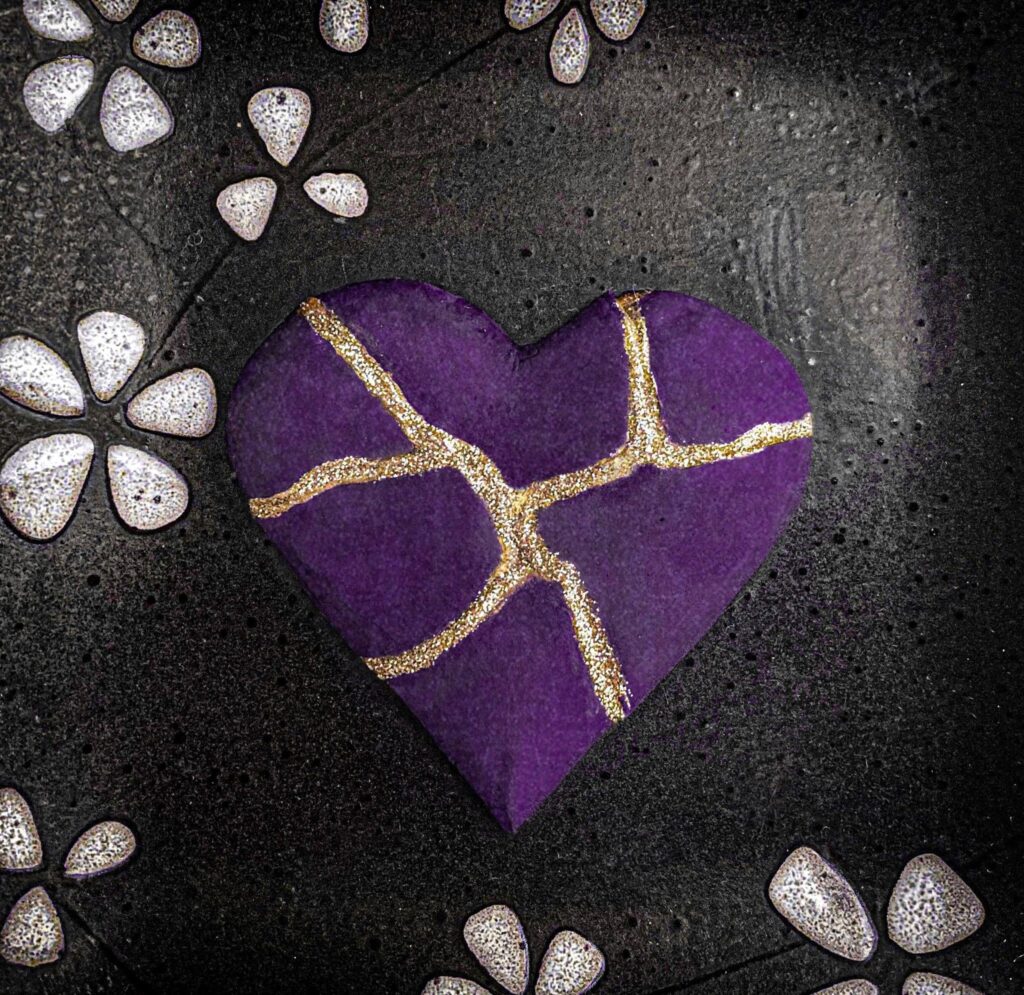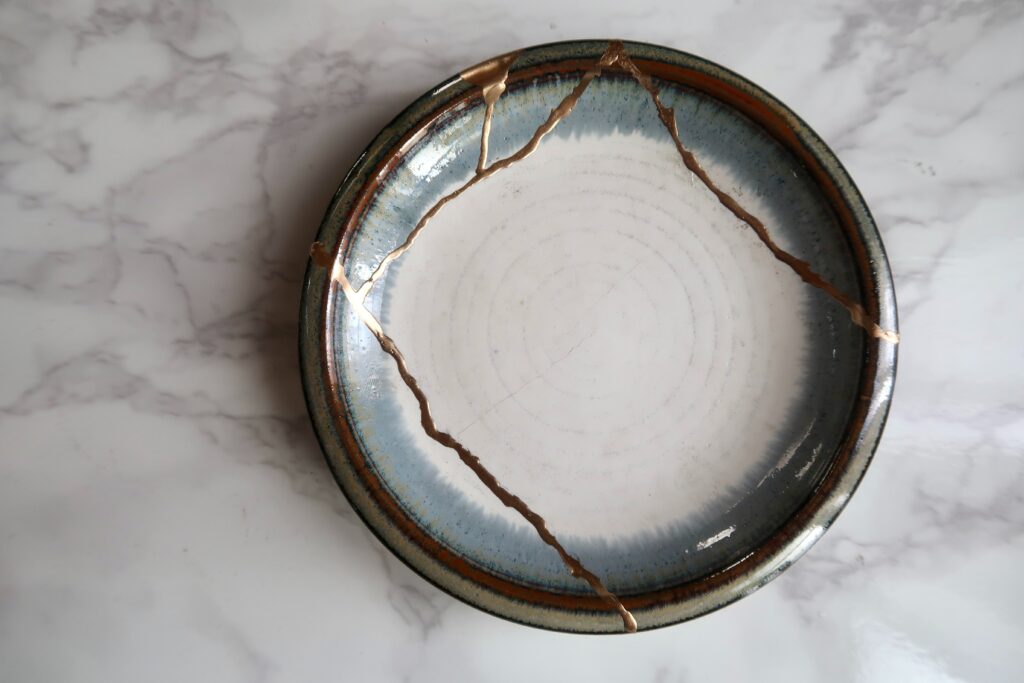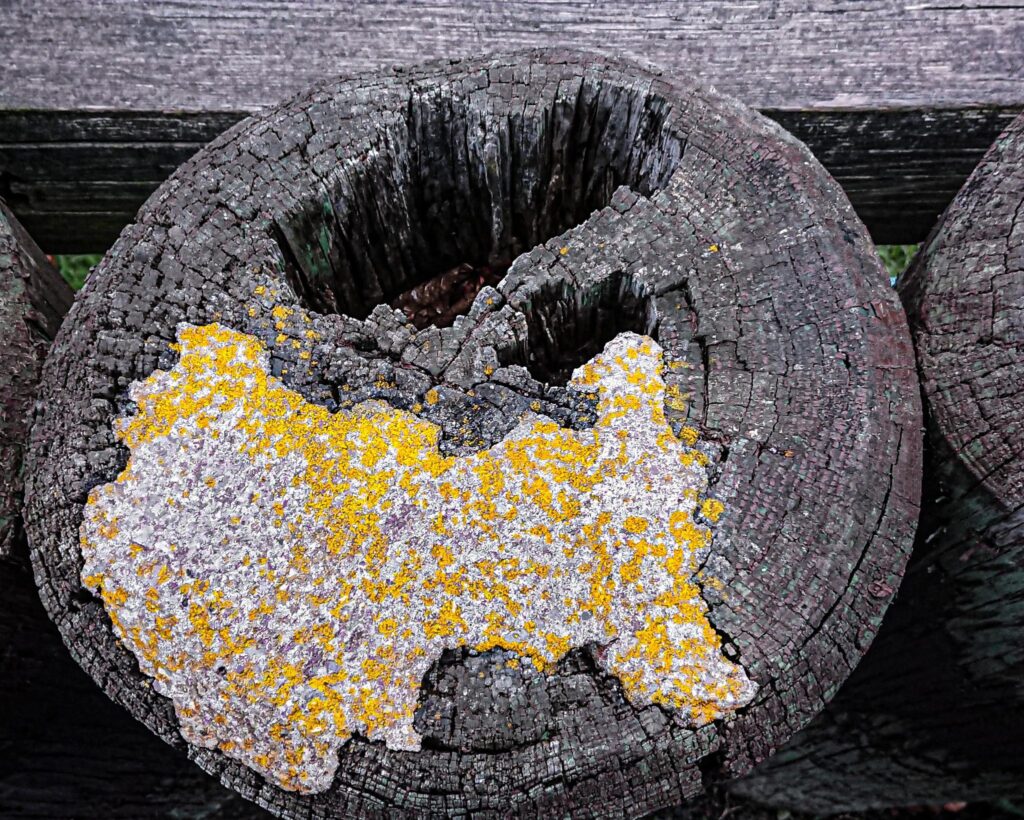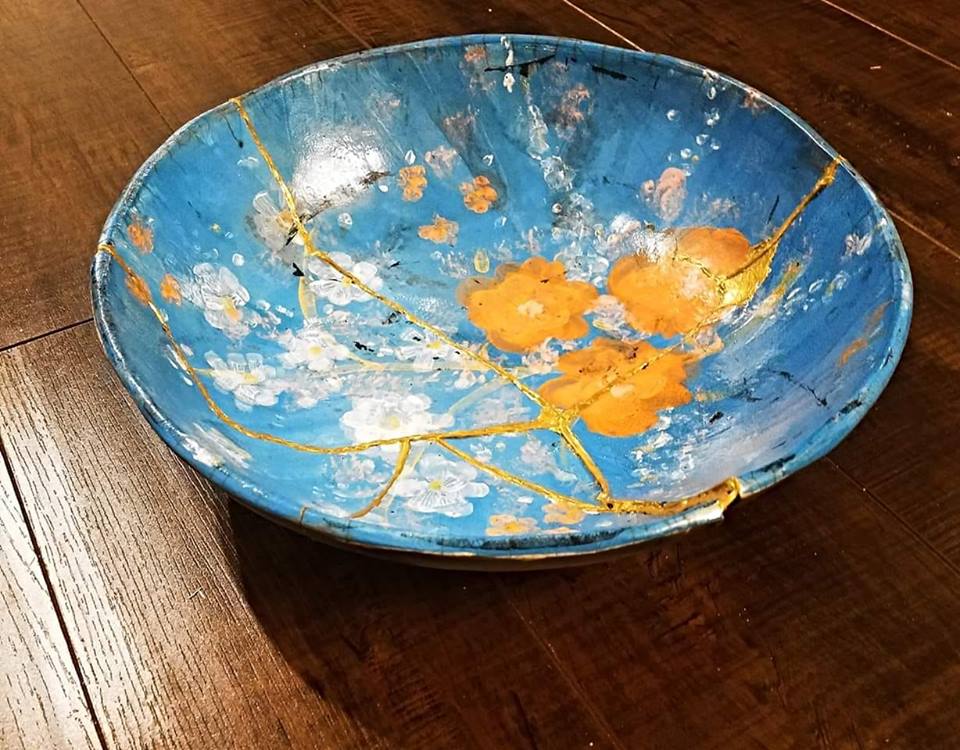What happens when something shatters? Is it merely destroyed? According to the Japanese concept of kintsugi, the answer is no. Even that which breaks can still be beautiful.

Just like Taylor Swift, “when I break, it’s in a million pieces.” And it feels equally devastating to put my heart into something I care about deeply, only to helplessly watch it tear apart. In those moments of coming undone, it can be hard to find any trace of hope. But even as we lie in pieces, kintsugi offers a path forward.
What Is Kintsugi?
So this is the awkward point where, after waxing philosophically about kintsugi, I have to admit that it’s technically a style of pottery. Well, to be fair, it’s both a type of pottery and a philosophy. But to understand the philosophy, we need to back up and take a look at the pottery. It also happens to be lovely pottery, so definitely worth a gander.
Kintsugi (金継ぎ) is a Japanese style of mending broken pottery with lacquer mixed with precious metals (usually gold). Its translation very appropriately means “golden seams.” So, rather than seamlessly restoring pottery and obscuring any damage, kintsugi instead highlights where the vessel has been repaired.

Dating back to as early as the 15th Century, kintsugi pottery was commonly used in tea ceremonies and fits within the Wabi Sabi (侘寂) concept of embracing imperfections. As a philosophy, kintsugi is about not hiding the blemishes of brokenness, but instead, celebrating the act of repair.
Culture of Disposability
In stark contrast with the style of kintsugi, our contemporary culture is arguably one of disposability. Rather than laboring to engage in repairs, we often just throw away material items, our relationships with each other, and even aspects of ourselves.
Throw Away Things
When something breaks or becomes old, it can seem simpler to toss it away and update to a new, and perhaps fancier, model. This perspective is commonplace in our throwaway society.
The disposable nature of objects is often by design. With “planned obsolescence,” manufacturers create products not meant to last, as they cease to function or become outdated. For example, with “fast fashion,” flimsy clothes quickly tatter and lose their trendy status. Similarly, Apple products stop providing software updates, rendering otherwise functional hardware less useful. Consumers are forced to keep buying more stuff, which is taxing on our wallets, but great for company profits.
The prevalence of disposable goods also has environmental costs. The whole lifecycle of a product—from resource extraction to manufacturing to packaging to transportation to waste disposal—takes a toll on the Earth. To be more eco-friendly, we can reduce consumption by endeavoring to maintain and repair items that are already ours.
Throw Away People
Just as we’ve gotten used to tossing away things, our relationships are often considered disposable. In the song “Irreplaceable,” Beyoncé warns, “I could have another you in a minute… So don’t you ever for a second get to thinking you’re irreplaceable.” It’s certainly a catchy song, but the lyrical message feels concerning —that even our most intimate partners should be easy to replace. (Later in life, even Queen B decided against replacing her husband, bravely choosing to instead repair their marriage.)
Our ancestors often lived in small communities and, for better or worse, were generally stuck with the people nearby. Since the advent of industrialization, however, humans have steadily migrated from rural farms to densely populated urban areas. Within a vast sea of people, opportunities increased to find those with whom we uniquely click. On the other hand, the ease of meeting someone new reduced the urgency to maintain social ties. Moreover, advances in transportation facilitated the ability to relocate for education and careers. With the commonness of this mobile lifestyle, it became normalized to view relationships as only temporary. Nowadays, apps like Tinder provide an entire menu of potential partners in the palm of one’s hand. So technology has made it easier to find a plethora of new relationships.
Relationships also aren’t easy. As psychologist Dr. Melanie Joy explains, “Resilient relationships take time and effort, as well as the willingness to address misunderstandings, hurt feelings, and any conflicts as they arise.” Good relationships also require creative problem-solving to negotiate individual needs and find win-win solutions. This defies the common expectation that, if a relationship is meant to be, it will flow smoothly and effortlessly.
So, when the work of maintaining a relationship becomes inconvenient, we might believe the grass is greener elsewhere. It can be enticing to just move on and form a shiny, new relationship —one that has yet to experience any wear and tear. Flitting from relationship to relationship can certainly be easier, but our connections can never be more than superficial unless we value someone enough to hold onto them.
Throw Away Selves
In an era when relationships are so easily discarded, we’re keenly aware that we too are in danger of being tossed aside. This is why it can feel less scary to abandon aspects of ourselves, which we don’t trust will be accepted, rather than risk losing our connections with one another. So, in the words of psychologist Dr. Brené Brown, we “hustle for our worthiness by constantly performing, perfecting, pleasing, and proving.”
We’re regularly inundated with meticulously crafted images of supposedly picture-perfect lives, so it’s unsurprising when we worry about measuring up. We may even believe that we need to be Instagram-perfect to be valuable. So we adorn ourselves in the armor of perfectionism, believing that, if we do everything right, then we’ll avoid the shame of being judged as not good enough.
Perfectionism might seem like a reasonable strategy to secure acceptance and belonging, but the thing is that pobody’s nerfect. And when trying to perfectly fit in with society’s expectations, we end up throwing away parts of ourselves (maybe even traits we value). In the process, we lose our authenticity.
Ironically, when we get rid of our authentic selves, we unintentionally throw away our ability to experience true belonging. We can’t be accepted for our real selves while offering a fake image we’ve manufactured. So, to sincerely belong, we should follow the advice of the Genie in Aladdin and “be yourself.”
The Beauty of Kintsugi
While kintsugi pottery has an aesthetic visual appeal, its deeper beauty is found in its symbolism. Kintsugi reminds us that what’s been broken can still retain value. Even further, it speaks to the understanding that certain things matter enough to be worth repairing. And with the care and dedication we devote to repairing something we value, that can make it even more beautiful.
Kintsugi also highlights that not everything is replaceable. For example, I could go to Pier One and get something that looks like my favorite papasan chair, but no other chair will have the same meaning as the one I was gifted by my grandma (which is why I fix it every time it splinters). Even more significantly, our connections with ourselves and each other are uniquely special. So, we find depth and meaning within those things we cherish because they’re irreplaceable.
The Repair Process
When an artisan crafts a stunning piece of kintsugi pottery, they draw from their extensive knowledge and honed skills to complete the repair process. To bring kintsugi into our own lives, we similarly require the knowledge and skills to engage in repairs.
For fixing material objects, my first instinct is to go straight to Google to find step-by-step how-to guides. We also might reach out to the handy people we know for assistance. ChatGPT can even help as we can go back and forth with questions to find a repair solution.
With our precious relationships, it’s understandable to hope for there never to be even the tiniest of fractures. Ruptures, however, are normal and inevitable. But the good news is that moments of disconnection create opportunities to build stronger relationships. Each time we adhere our relationships back together, we gain a sense of safety in feeling reassured that it won’t stay broken. We learn not to fear the fragility of our relationship but to trust in its resilience.
So, how do we repair relationships with ourselves and each other? One of the best starting points would be Dr. Melanie Joy’s book, Getting Relationships Right. We might assume that we should intuitively know how to relate in healthy ways, but Dr. Joy proposes that we need to learn relational skills just as we need to study other skills, like reading or algebra.
We can improve our relationships with each other by learning skills like how to: make amends, empathize with each other’s perspectives, effectively communicate, express openness and honesty, create a sense of trust and safety, and embrace connection. With our self-relationship, some things we can learn are how to: challenge shame, understand our emotional needs, and embrace our values. By strengthening our relational skills, we’re empowered to build, maintain, and repair satisfying relationships that can weather even hard times.
There’s humbleness in admitting that maybe we aren’t confident in our ability to repair things. Nonetheless, we can take the first step by leaning into our courage and finding the perseverance to simply try. We’re only ever brave when willing to take risks despite uncertain outcomes.
Kintsugi Inspires
A few years ago, I came across a well-worn fence at Fort Niagara. Damaged and decaying, it was clearly the victim of entropy. Someone, though, had taken the time and effort to fill in the cracks of a damaged post. It was likely an unintentional effect but gave the fence a strong kintsugi vibe. While the fence might not’ve otherwise stood out, the repairs created a unique look that I couldn’t help but find pretty.

At a time when my life was falling apart, seeing this simple fence post inspired me to remember the beauty in repairs. With a focus on the things that deeply matter, I’m still diligently working to find ways to place all the shattered pieces back together. And I keep finding motivation in remembering that repaired fence post and the beauty of kintsugi.
Get more like this—Sign up for our daily inspirational newsletter for exclusive content!
__
Photos: Lauren Wesp; Riho Kitagawa via Unsplash; Ruthann Herwitz via Wikimedia Commons





